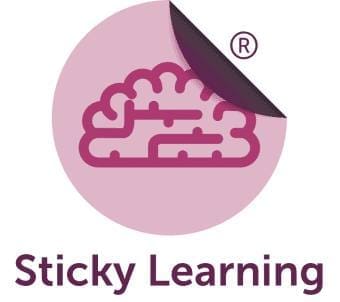For Supermarkets Serious About Achieving Goals
Sales Directors tell us that when it comes to ‘budget time’ they get frustrated by Account Managers that grab an excel file of their products and then just forecast some additional growth. This limits growth to a few percent, whereas they know that great Sales Directors are responsible for great growth. They ask us for a solution. We then help them cry creating a business plan with them and their team.
1. What Will You Get at the End of the Process?
A 1-page Business plan showing your Vision, your Goals, your Objectives and your KPIs. Plus the strategies/projects that will achieve those. And the ways of working that will help the team to achieve those targets. Don’t be ‘put off’ by the 1-page because the famous business proverb is true here, ‘I’m sorry I wrote a long report. I didn’t have time to write a short one’. Creating a 1-page business plan forces choices.
2. The Business Planning Process?
There will be some pre-work. This involves answering the following questions, and then 1 day of getting the team together, followed by another day 1 month later, with work happening between the two days.
- At what level do you want to business plan? (For one account, for all accounts, or for the business).
- Why do you need a business plan?
- Can you identify the 3 behaviours that you hope the business plan will change/create?
- What do you do now to a business plan?
- If you didn’t have a business plan, what would the impact be?
- What outcomes would you like the business plan to deliver in 6 months after it is created?
- How do you want the business plan to tie-into the wider business plan (if there is one)?
3. Who Should Attend the Account Planning Process?
Depending on whether you want to create a BP for the business, for the commercial team or for the accounts, you will need the appropriate people there. Those that can shape the BP, make the decisions and want to be part of creating something that will drive the next 3 years. About 8 people is ideal.
4. Example of a Session on the Business Planning Day.
We will challenge the group to review their share of the category in each customer, versus other suppliers and ask what is possible to supply. And what performance is possible to deliver. Then identify the headroom for each category for each customer. This is known as the ‘Share of Stomach’ principle copied from Birds Eye used to take an even loftier approach to ‘share’ by challenging themselves on their share of consumers’ stomachs!
Birds Eye didn’t take their current catalogue and forecast growth, they looked at what percentage of frozen foods consumers ate, what their percentage was and identified two opportunities; The headroom from Birds Eye’s percentage to the Frozen Food’s percentage and also the potential growth of Frozen Foods within the stomach, i.e. where could they detail from?
5. What is the Next Step in Business Planning?
Answer the questions above in section 2, arrange a call with us to discuss your Business Plan, and then arrange the 1st day with your team.
6. What are the Benefits of Creating a Business Plan?

It’s a little like playing a game of 501 darts. Unless you know what you are aiming to achieve with each throw, and with a target in mind, you are just busy throwing darts. The top 3 benefits are confidence, for you, and your team, that you know what you are doing, a challenge because it will push you to achieve more, and it will identify opportunities that you didn’t know existed.
Ultimately, a Business Plan enables the Supplier to understand their growth, how they will grow their customers and how the supermarket will grow with their consumers. We call it the 3 legged stool; Supplier, Supermarket and Shopper.
7. How Much Does Business Planning Cost?
Included in the cost are:
- Discussing the Business Plan process on a conference call of up to 1 hour.
- Building the session plan for the 1st day.
- Producing the output from the 1st day.
- Half-day offline support between the two days.
- Building the session plan for the 2nd day.
- Producing the output from the 2nd day.
- Half-day offline support after the second day.
£4,200+vat payable in advance.
To find out more, please complete the form below:
Hopefully, the Term ‘Sticky Learning ®’ Has Intrigued You
Whilst You Probably Also Guessed a Sense of What It Is About. In short, Sticky Learning ® is our own unique learning method. A method that we have developed to help Learners Realise more of what they have learnt. To help them be able to Recall more of what they have learnt. And Retain more of what they have learnt. Furthermore, we continually upgrade this unique training method to include further elements such as habit formation. We feel this has become a big part of helping Learners to use more of what they have learnt for longer.

Available for Virtual Delivery
Learning for Today’s World:
“MBM understood our challenges because they know our industry.”
“Their chain of evidence meant I understood the ROI from training.”
“They made it stick for the long term.”

